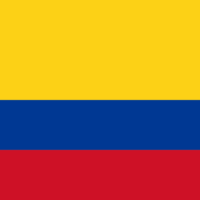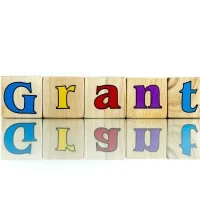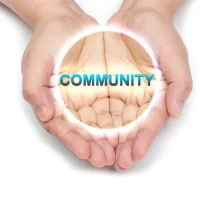In the ever-evolving landscape of the arts, securing funding can often be a daunting task for artists and creative entrepreneurs. Grants serve as a vital lifeline, providing the necessary financial support to bring innovative ideas to fruition. These funds not only help cover the costs of materials and studio space but also allow artists to dedicate time to their craft without the burden of financial strain.
For many, grants can be the difference between a fleeting idea and a fully realized project that contributes to the cultural fabric of society. Understanding the various types of grants available is crucial for artists seeking financial assistance. From government-funded programs to private foundations, the options are diverse and tailored to meet the needs of different artistic disciplines.
This article will explore several prominent grant opportunities, offering insights into their application processes and eligibility criteria. By equipping artists with this knowledge, we aim to empower them to navigate the often-complex world of grant applications and secure the funding they need to thrive.
National Endowment for the Arts Grants
The National Endowment for the Arts (NEA) is a cornerstone of federal support for the arts in the United States. Established in 1965, the NEA provides grants to individuals and organizations across a wide range of artistic disciplines, including visual arts, music, theater, and literature. The NEA’s funding is designed to foster creativity and promote access to the arts for all Americans, making it a vital resource for artists looking to expand their reach and impact.
One of the most significant programs offered by the NEA is its Art Works grant, which supports projects that enhance community engagement and artistic excellence. Artists can apply for funding to support specific projects, such as public art installations or community-based performances. The application process typically requires a detailed project proposal, a budget outline, and evidence of artistic merit.
Successful applicants often demonstrate a clear vision for their project and its potential impact on the community. By leveraging NEA grants, artists can not only fund their work but also contribute to a broader dialogue about the role of art in society.
Artist Fellowship Grants
Artist fellowship grants are another essential avenue for funding creative endeavors. These grants are typically awarded to individual artists based on their artistic merit and potential for future contributions to their field. Unlike project-based grants, fellowship grants provide unrestricted funds that artists can use at their discretion, allowing them to focus on their work without the constraints of specific project requirements.
Organizations such as the New York Foundation for the Arts (NYFA) offer fellowship programs that cater to various artistic disciplines, including visual arts, performing arts, and literature. The application process often involves submitting a portfolio of work, a resume, and letters of recommendation. Successful applicants are usually those who demonstrate a strong body of work and a commitment to their artistic practice.
Fellowships not only provide financial support but also enhance an artist’s credibility and visibility within the art community, opening doors to future opportunities.
Creative Capital Grants
Creative Capital is an organization dedicated to supporting innovative artists through funding and advisory services. Their grant program is unique in that it focuses on projects that push boundaries and challenge conventional norms within the arts. Creative Capital grants are awarded to artists who demonstrate a commitment to risk-taking and experimentation in their work.
The application process for Creative Capital grants is rigorous and involves multiple stages, including an initial proposal submission followed by interviews with a panel of experts. Artists are encouraged to articulate their vision clearly and demonstrate how their project will contribute to contemporary discourse in the arts. In addition to financial support, Creative Capital offers professional development resources, helping artists navigate the complexities of project management and audience engagement.
This holistic approach ensures that grantees not only receive funding but also gain valuable skills that can enhance their careers.
The Awesome Foundation Grants
The Awesome Foundation is a unique initiative that provides small grants to individuals and groups working on creative projects that aim to make the world a better place. With chapters around the globe, the Awesome Foundation operates on a simple premise: to fund “awesome” ideas that inspire positive change in communities. Each chapter awards monthly grants, typically ranging from $1,000 to $2,000, making it an accessible option for emerging artists and creative entrepreneurs.
The application process is refreshingly straightforward; applicants submit a brief proposal outlining their project and its potential impact. The emphasis is on creativity and originality rather than extensive documentation or lengthy proposals. This approach allows artists from diverse backgrounds to present their ideas without being hindered by bureaucratic barriers.
Many successful projects funded by the Awesome Foundation have included community art installations, innovative performances, and educational initiatives that engage local populations in meaningful ways.
Women’s Studio Workshop Grants
The Women’s Studio Workshop (WSW) is dedicated to supporting women artists through various grant programs designed specifically for female creatives. WSW offers several funding opportunities, including project grants, fellowships, and residency programs that provide both financial support and access to studio space and resources. These grants aim to empower women artists by fostering an environment where they can develop their skills and pursue their artistic visions.
One notable program is the WSW’s Artist’s Grant, which provides funding for specific projects that demonstrate artistic merit and innovation. Applicants are required to submit a project proposal along with samples of their work. The selection process emphasizes not only artistic quality but also the potential impact of the project on the artist’s career trajectory.
By focusing on women artists, WSW plays a crucial role in addressing gender disparities in the art world and ensuring that female voices are heard and celebrated.
Artadia Awards
Artadia is an organization that provides unrestricted cash awards to visual artists in select cities across the United States. The Artadia Awards are designed to support artists at various stages of their careers, from emerging talents to established professionals. What sets Artadia apart is its commitment to fostering long-term relationships with grantees, offering not just financial support but also access to resources that can help artists thrive.
The application process for Artadia Awards involves submitting an online application that includes images of recent work, an artist statement, and a resume. A panel of esteemed jurors reviews submissions based on artistic merit and potential for future growth. Recipients of Artadia Awards benefit from unrestricted funds that allow them to invest in their practice as they see fit—whether that means purchasing materials, funding exhibitions, or simply taking time off from other work to focus on their art.
This flexibility empowers artists to make choices that align with their creative goals.
Conclusion and Tips for Applying for Grants
Navigating the world of grants can be challenging for artists and creative entrepreneurs, but understanding the available opportunities is key to securing funding. Each grant program has its unique focus and requirements, so it’s essential for applicants to tailor their proposals accordingly. Researching each grant thoroughly will help artists align their projects with funders’ missions and values.
When preparing grant applications, clarity is paramount. Artists should articulate their vision succinctly while providing enough detail to convey the significance of their work. Including visuals—such as images or videos—can enhance proposals by showcasing artistic quality and potential impact.
Additionally, seeking feedback from peers or mentors before submission can provide valuable insights that strengthen applications. Ultimately, persistence is crucial in the grant application process. Rejections are common in the competitive landscape of arts funding; however, each application serves as an opportunity for growth and refinement.
By remaining committed to their artistic practice and continuously seeking out funding opportunities, artists can cultivate a sustainable career that allows them to share their unique voices with the world.








































